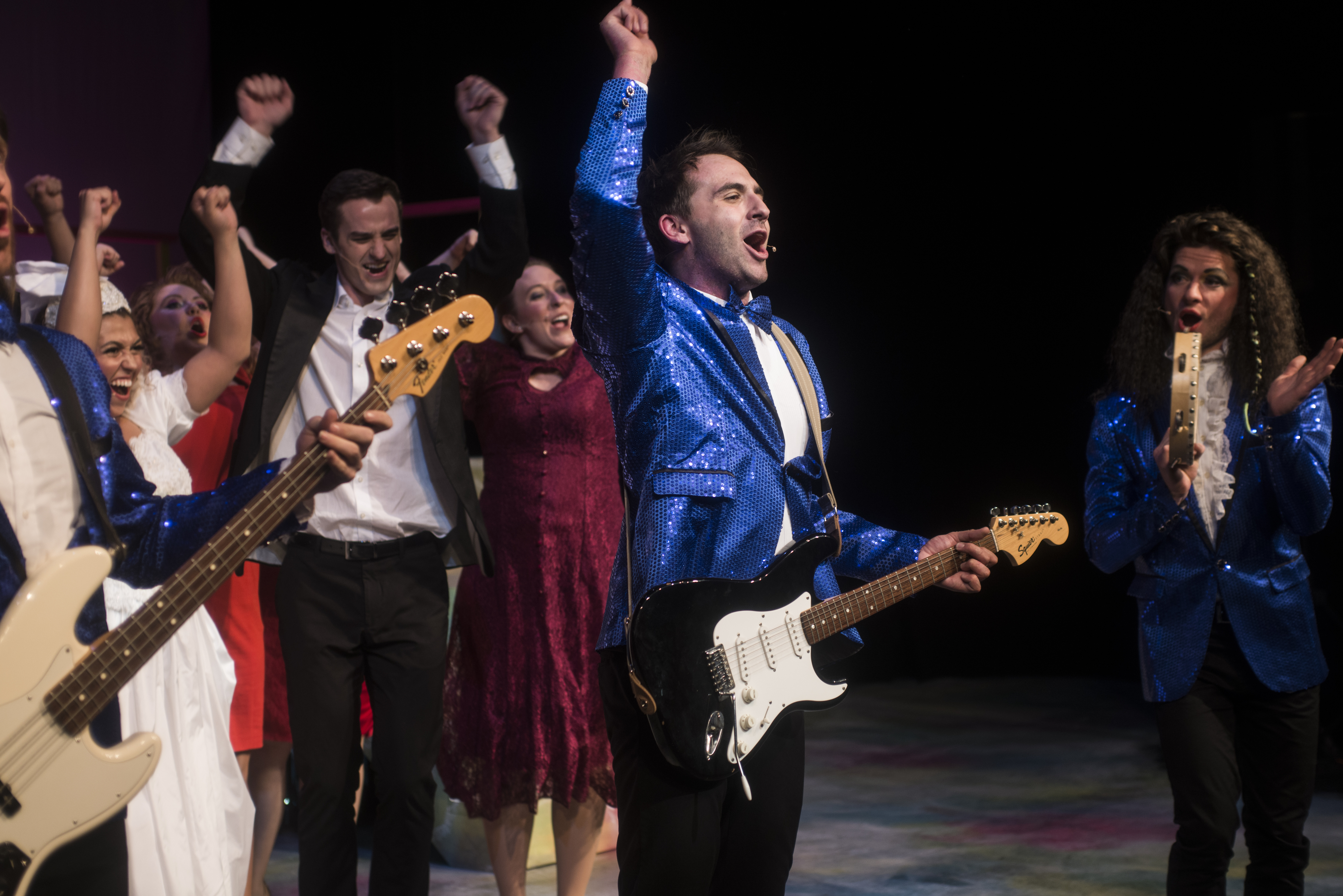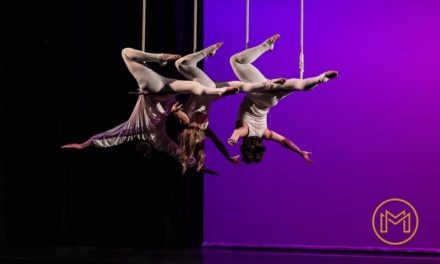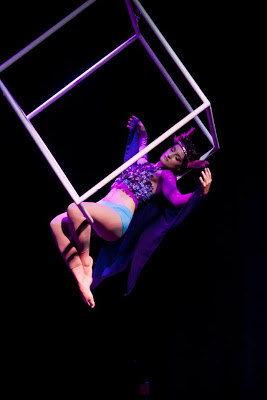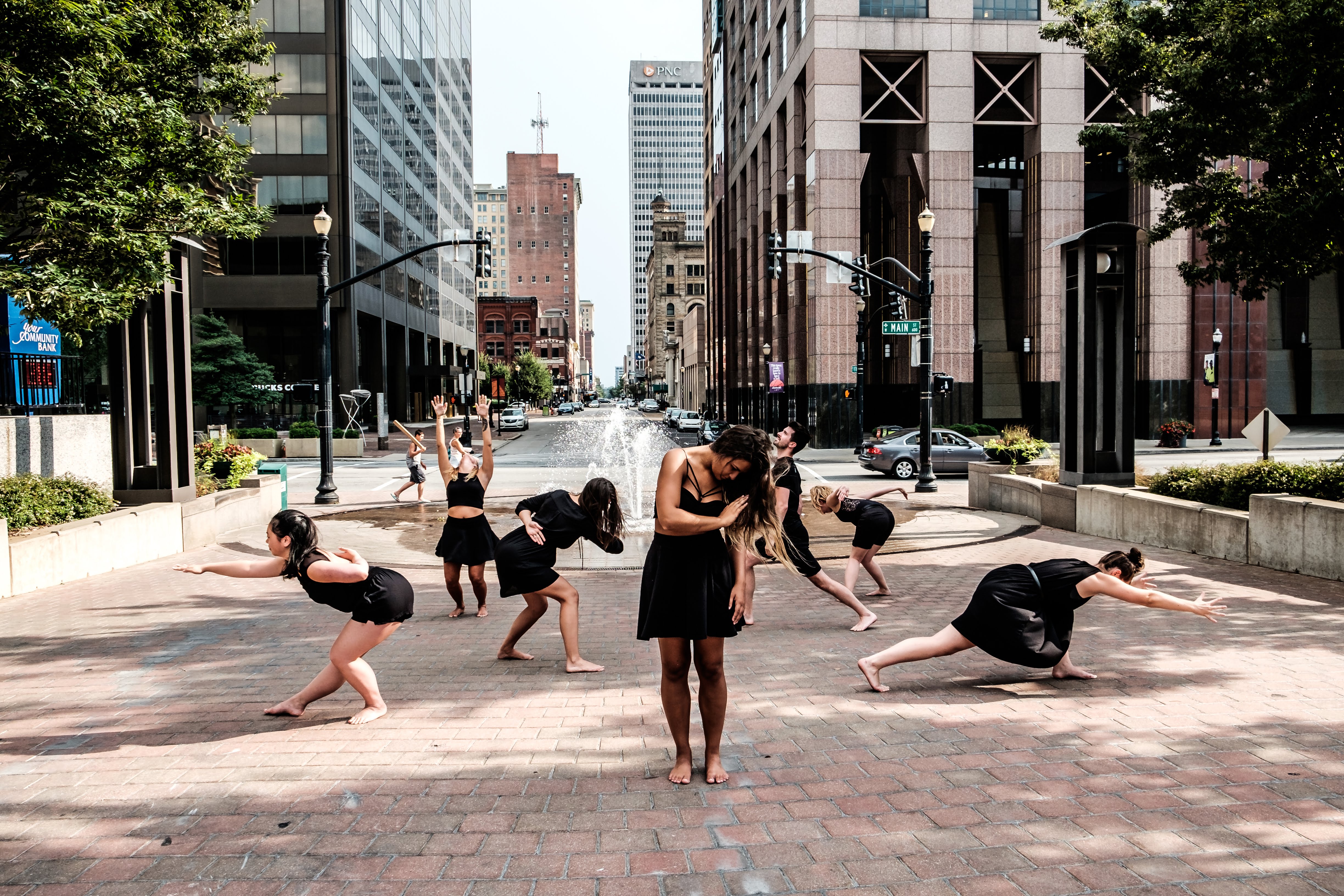Nicolas Fortin (violin) & John Austin Clark. Photo – Nerissa Sparkman
Dido and Aeneas
Henry Purcell, composer
Nathan Tate, librettist
Review by Keith Waits
Entire contents copyright © 2015 by Keith Waits. All rights reserved
I cannot claim to speak with any authority on Baroque music. My own preferences have tended toward the Classical and Romantic periods and composers such as Mozart and Beethoven. But there is always something engrossing about reaching back to the period in which orchestral forms were first developed; forms that have defined classical music ever since.
Bourbon Baroque has always sought fruitful collaborations with other artists. The quality of their work certainly stands on its own, except that Cofounders John Austin Clark and Nicolas Fortin are savvy enough to recognize the full value of such partnerships. For one thing, it illustrates their high ambition. Here, at the invitation of Kentucky Center Presents, they work jointly with Grabbag Productions, the Louisville Dance Alliance, and the Youth Performing Arts School Chamber Choir, in service to what is arguably the grandest production in their history, Henry Purcell’s opera, Dido and Aeneas.
Before that main event, they performed George Philipp Telemann’s La Putain, Suite in G Major. A piece in eleven brief movements, it was this night also the score for Sarah Edgar’s highly individual dance performance. Arraigned in a 17th century costume that carries some nod to modern sensibility, she was a wide-eyed, coquettish figure that neatly embodied the line of text listed in the program: “Even with constant maintenance, the freshness of the ingénue begins to fade.” The movement was seductive and self-conscious; an impish comic character that was elegant but also carried a touch of the buffoon. In one repeated motion, Ms. Edgar reclined awkwardly on a lounge nearly upside-down, falling ‘ass over tit’ as it were, until she resided, with equal awkwardness on the floor. Such muted slapstick may not be what one expects from a baroque music concert, and that is assuredly the point of it. One of the objectives of these collaborations seems to be to help puncture the balloon of pomposity that might trail along the word “baroque.”
Ms. Edgar is listed as stage director and choreographer for Dido and Aeneas, and the variety of elements in play make for a unique theatrical presentation. Four principal singers (Kristine Hurst-Wajszcuk, Chad Sloan, Marie-France Duclos & Lindsey Adams) three actors (Erin Leigh Crites, Abigail Bailey-Maupin, & Gregory Maupin of Grabbag Productions) and three dancers (Josh Ford, Maggie Patten, Cana Rohde of Louisville Dance Alliance) alternate the focus. This breakdown, an artistic choice drawn from traditions of the period, provides both a challenge and an opportunity for a modern audience. It may seem narratively redundant, but how often do we see pure pantomime by artists trained for it, in beautiful costumes and wearing masks (designed by Mr. Maupin) crafted to fulfill a singular dramatic purpose. The Greek tragedy of the plot may suggest portentous sackcloth and ashes, but what we experience is more akin to genuine poetry.
The dancers are equally impressive with the terpsichorean portion, which here is somewhat more traditional than Ms. Edgar’s work before intermission, fluid but executed with precision. They function as a type of Chorus, not aligning with character but forwarding the narrative.
Movement and gesture also connect the actors and singers visually onstage, even though they are kept apart from one another. The mirror effect helps to understand the relationship within the scenario, and is understated enough to never distract. In fact, with everything that is happening onstage, the flow is clean and uncluttered, with Bourbon Baroque placed in the center and all the action blocked to move around them. The YPAS Chamber Choir includes four members given character moments in concert with the primary vocalists, and they acquit themselves admirably.
As for the musical performance, if ignorance insists on being easily impressed, my instinct, combined with no small degree of faith in the judgment and acumen of Mr. Clark and Mr. Fortin, is to find the playing to be calibrated for a balance of emotional impact and tasteful intellectual repose. The singers provide aural color to the characterization of Dido, Aeneas and Belinda, and one, Lindsey Adams, is given the sole responsibility for the character of the Sorceress/Spirit. It, perhaps unfairly, highlights her performance more than the other vocalists, but all four appeared to be in fine voice and delivered glorious result.
Also, and this is an observation I have made before about Bourbon Baroque collaborations, all of this fine work from singers, actors, dancers, etc., tends to have the effect of deemphasizing the musicians in some small measure, which I feel should be counted as a generosity on the company’s part. Perhaps it is s barometer of their own confidence, but Bourbon Baroque seems to delight in pursuing programming that brings the spotlight to other artists. Still, when, in the beautifully paced finale, Dido’s dead body is carried by the dancers to the choir platforms, and laid there at their feet, the entire company is employed in a graceful tableau, and the sublime, mournful strains of the orchestra rendering Purcell’s final passage seem suddenly to fully dominate the moment. As flower petals shower the stage from above, the piece realizes its full potential, and the audience could feel only gratitude at being present.
Dido and Aeneas is the farewell performance of Bourbon Baroque in Louisville. The ensemble will relocate to New York City this summer, and while the move makes sense for such an ambitious company, it removes one of the very few classical music groups standing apart from the Louisville Orchestra. It is a tough loss for this community, to be certain, but we can only wish them well in their next challenge. Dido and Aeneas is powerful evidence that they are more than ready for it.
Dido and Aeneas
March 14, 2015
Bourbon Baroque
Kentucky Center for the Performing Arts
501 West Main Street
Louisville, KY 40204
502-584-7777
Bourbonbaroque.com
 [box_light]Keith Waits is a native of Louisville who works at the Louisville Visual Art Association during the days, including being one of the hosts of PUBLIC on ARTxFM, but spends most of his evenings indulging his taste for theatre, music and visual arts. His work has appeared in Pure Uncut Candy, TheatreLouisville, and Louisville Mojo. He is now Managing Editor for Arts-Louisville.com.[/box_light]
[box_light]Keith Waits is a native of Louisville who works at the Louisville Visual Art Association during the days, including being one of the hosts of PUBLIC on ARTxFM, but spends most of his evenings indulging his taste for theatre, music and visual arts. His work has appeared in Pure Uncut Candy, TheatreLouisville, and Louisville Mojo. He is now Managing Editor for Arts-Louisville.com.[/box_light]





